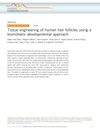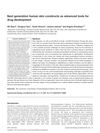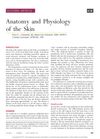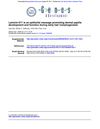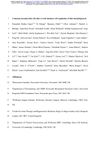Efficient Generation of Skin Organoids from Pluripotent Cells Using Defined Extracellular Matrix Cues and Morphogen Gradients in a Microfluidic Device
March 2024
in “
Advanced healthcare materials/Advanced Healthcare Materials
”
pluripotent stem cell-derived skin organoids 3D extracellular matrix collagen type I laminin 511 keratinocyte differentiation hair follicle formation 3D bioprinted hydrogel device microfluidic device differentiation factors dermal cells epidermal cells PSOs ECM collagen laminin keratinocytes hair follicles bioprinted hydrogel microfluidic
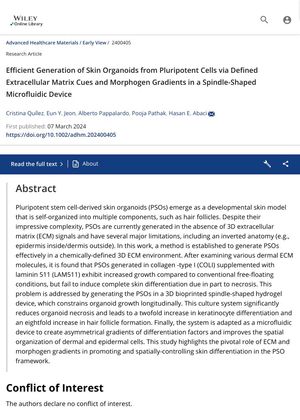
TLDR Scientists developed a new way to create skin-like structures from stem cells using a special 3D gel and a device that improves cell organization and increases hair growth.
This study presents a novel method for generating pluripotent stem cell-derived skin organoids (PSOs) within a chemically-defined 3D extracellular matrix (ECM) environment. By using collagen type I supplemented with laminin 511, the researchers observed increased growth of PSOs compared to traditional methods, although complete skin differentiation was hindered by necrosis. To address this, they developed a 3D bioprinted spindle-shaped hydrogel device that reduced necrosis and significantly enhanced keratinocyte differentiation and hair follicle formation. Additionally, adapting the system into a microfluidic device allowed for the creation of asymmetrical gradients of differentiation factors, improving the spatial organization of dermal and epidermal cells. This work underscores the importance of ECM and morphogen gradients in the effective differentiation and organization of skin components in PSOs.
